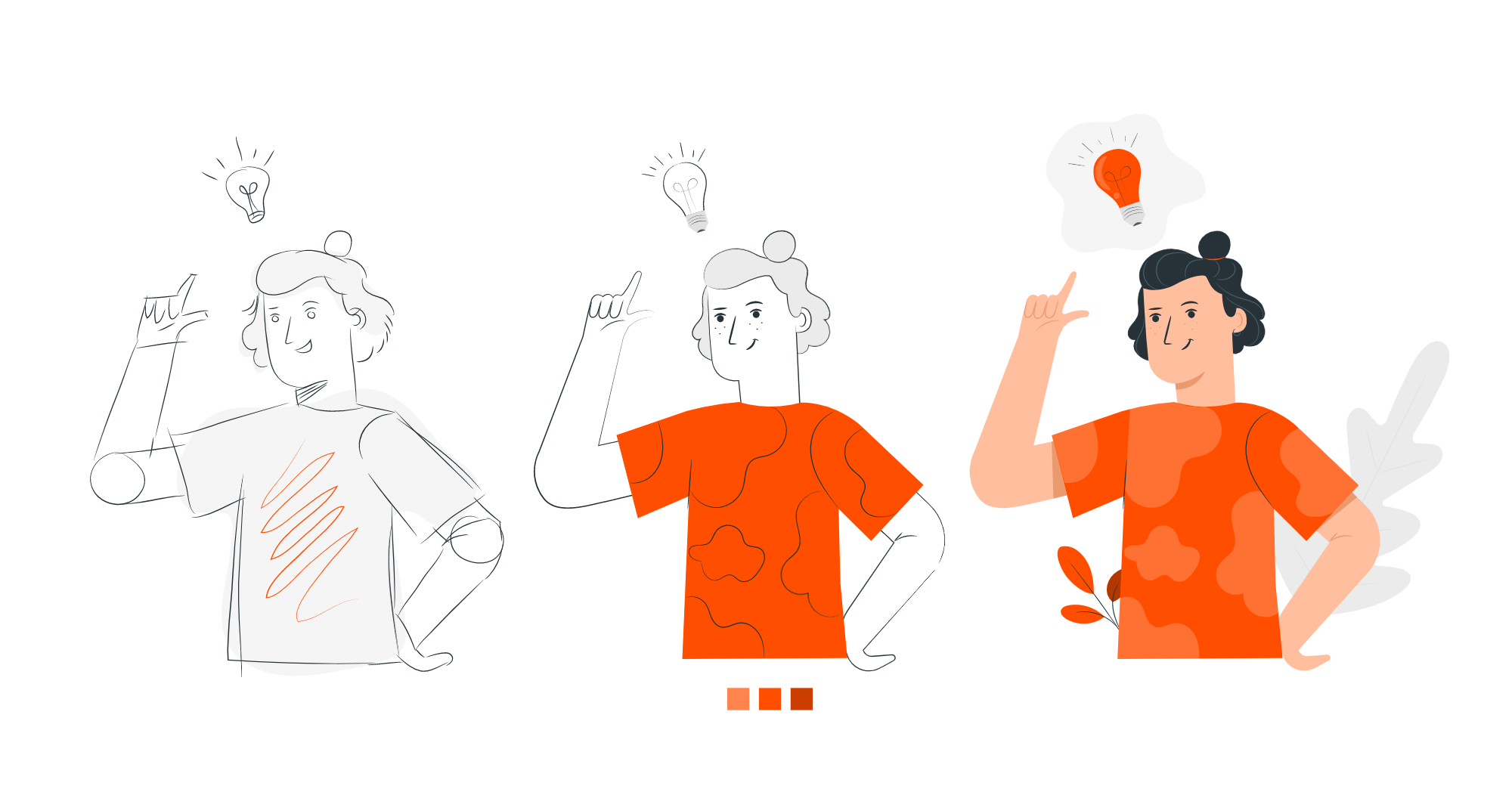
What is design thinking?
Design thinking is the process of solving problems by prioritizing the needs of the consumer. It uses an iterative, hands-on approach to create innovative solutions. It encourages companies to focus on the customers they create for, leading to better products and services and improved internal processes. Design thinking assumes that before starting a project, you should ask yourself: what is the real need of end users. Then, by prototyping, testing ideas and verifying them, you can investigate whether the final product will be a solution to the customers’ problems.
The main assumptions of design thinking
The most important thing in design thinking projects is how consumers actually engage with the product or service. To be truly focused on the target user, designers observe how people use the product or service to then improve the consumer experience. Design thinking prefers quick action in the form of testing prototypes rather than conducting endless research. It is not a way to arrive at a single solution, but more of a continuous evolution of thinking and responding to consumer needs.
The design thinking process
Design thinking is more than a trendy technology buzzword. To get a good understanding of the process, let’s go through its five key stages.
- Empathy – The designer observes consumers to better understand their needs or to observe how they interact with the product. Observation must be done with empathy, which means withholding judgment and rejecting preconceived notions about the consumer’s needs. Observation uncovers issues that the consumer didn’t even know about or couldn’t verbalize themselves.
- Definition – This stage brings together the observations from the first stage to define the problem the software house is trying to solve.
- Ideation – the gathering of ideas to solve an identified problem. It is important that a variety of concepts are generated to give an initial idea of the architecture and layout of the overall end product.
- Prototype – turning ideas into actual solutions. Prototypes are not meant to be perfect. Their purpose is to quickly present a concept to see how it is perceived by consumers.
- Testing – once the prototype solution is given to consumers, it is necessary to observe how they interact with it. The testing stage allows you to gather feedback on the work done.
The design thinking process is iterative, not linear. At the end of the fifth stage, it may be necessary to return to one or more of the previous stages. Perhaps testing will show that another prototype needs to be developed, or that the consumer’s needs have been incorrectly defined.
When will design thinking work?
Although design thinking was pioneered by designers, it is now widely used in many industries, from the automotive industry to software development – and it works at all stages of product development. For software house projects, design thinking can be applied at any stage of the software development lifecycle, whether it’s planning, development, or testing.
Benefits of using the design thinking method in IT projects
- Allows you to use the potential of the team – by building multidisciplinary teams, you can fully exploit the knowledge and experience of all team members.
- Allows you to look at problems from a different perspective – by analyzing the needs of product users, IT companies can formulate an effective solution based on their specific needs.
- Ensures that the final product meets the objectives and requirements of the customer – creating prototypes ensures that the final product has undergone many tests and has been fully matched to the needs of customers.
- Allows for continuous learning – even after the completion of the project you can continuously measure the results and study how users benefit from the product. Conclusions allow you to identify weaknesses that can be eliminated before the next IT project.

How to implement design thinking into your team’s work to start working agilely?
Many IT companies are taking an agile approach to work using the Agile methodology, which we wrote about in a recent article. However, it is a good practice to combine the Agile method with design thinking.
At the beginning of the Agile cycle we have the creation of the vision and the plan. This is where the empathy stage of design thinking comes in. User research takes place and questions are asked. Based on this information, a Product Backlog can be created, defining the product requirements. Once the Product Backlog is formulated, the process of defining Design Thinking begins. This involves narrowing down the list of requirements and creating the Selected Product Backlog. Establishing these factors forms the basis for the idea and team collaboration stage. The UX Designer creates the information and feature architecture on which the engineering team will base their work.
At this stage, the team is ready for the prototype phase. The UX, UI, and Visual designers will work with the engineers to determine how the front-end will look and function, within the given constraints of technology and delivery dates, conducting Daily Sprints, on a check and balance system. When something is ready for use, testing begins along with reporting of results.
Design thinking is an inseparable element of all projects carried out in Da Vinci Studio. We invite you to familiarize yourself with our realizations of web applications, mobile applications and programmers outsourcing. If you want to see what we can do for you – feel free to contact us.














